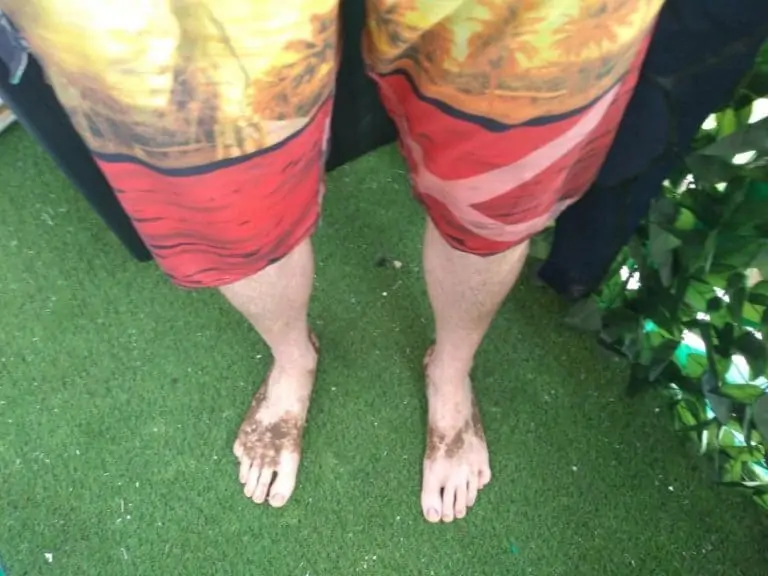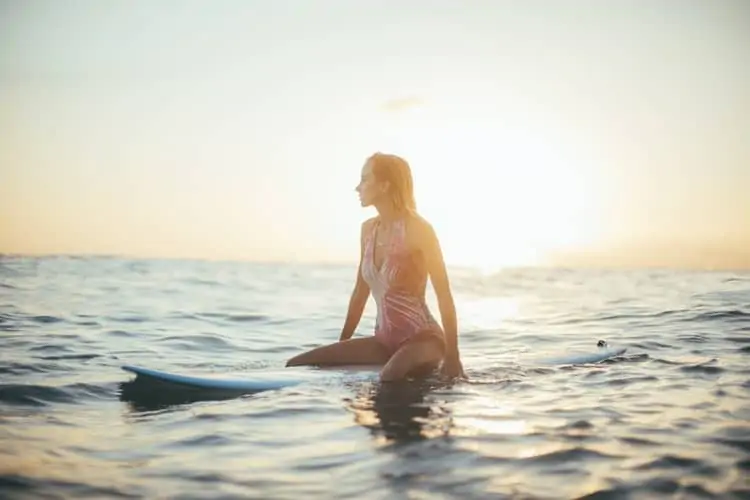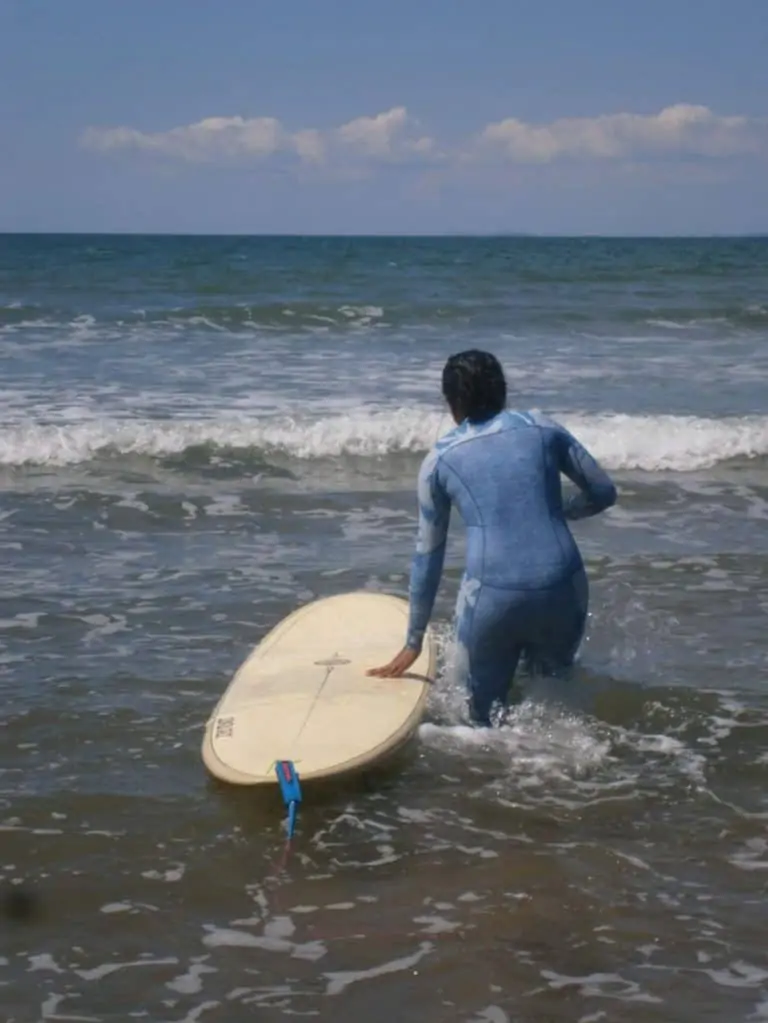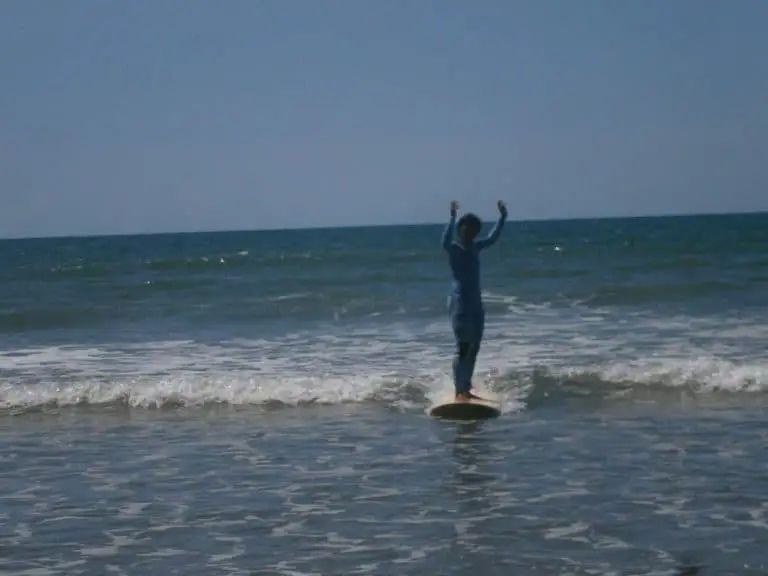Can You Learn to Surf at 30?
Starting out in surfing is something most of us think about as a youthful pursuit for children, teenagers and young adults.
However, for many people, especially those who live in cities and in landlocked areas, contact with the sea may come much later in life. When that time comes, it often draws a huge amount of curiosity, seeing the art of people riding on waves and having fun out in the sea.
Some people are already in their 30’s when they have the opportunity or desire to go surfing for the first time, and the immediate question is, can you learn to surf in your 30s, or is it too old?
Yes, you can learn to surf in your 30’s, as long as commit to it, have a decent level of fitness, and some amount of flexibility and strength. If you follow tricks and tips below, you will further accelerate your learning!
Learning like a Child
It is often said that it’s easy to learn things when you’re a kid, and there is a straightforward reason behind this phenomenon – because young children focus less on fear, failure and embarrassment and more on doing.
They have not yet learned the concept of consequence, and therefore they fear little.
When it comes to surfing, this means that children don’t think too much about what it means to learn or how best to learn, they simply give it a go and keep trying.
This is something that, as adults, we can take a lot from.
Developing a youthful and playful approach to learning to surf will be one of the best things that you can do as a learner in your 30s, so don’t overlook it!
The Advantages Of Being 30
There are many reasons why learning to surf at 30 also has massive advantages. Learning to surf might seem daunting at first for a 30-something beginner, but an older surfer would have picked up a few life skills and strengths along the way.
Good levels of fitness
All being well, a 30-something person will have a basic level of fitness, possibly after doing sport, or having a hobby or past-time that requires a form of fitness. This is already an advantage in the bid to learn how to surf.
On top of that, you will also probably know how to improve your fitness in effective and efficient ways.
Speaking from experience, I wish I’d known the importance of weight lifting and how to do proper bodyweight training to strengthen my muscles when I was younger, but I had no idea!
Able to buy the best equipment
The best surfing equipment required to learn to surf costs money, and it works out that the best stuff to learn on costs more than regular equipment.
An adult will usually be able to afford better equipment than most younger learners.
To help make these decisions, check out the Recommended Gear pages on this site to make sure you get the right gear for you!
Drive
An adult learner has a steadfast drive that overshadows any weakness or failings. At 30, your will is that much stronger than a kid who has so many distractions in life, another advantage of being an ‘older’ learner surfer!

The Three Skills To Work On Before You ‘Pop Up’
These are a few sneaky tips and tricks to get the older body up and riding on a surfboard pronto!
The biggest challenge to start surfing when you’re older is the pop-up, whicj is the transition from lying on your board and paddling, to ‘popping up’ and standing on your board. There are three ways to further prepare yourself for this process.
1. Build Your Arm Strength
The simple push-up is the best way to prepare yourself for the pop-up. The movement from lying prone to standing up is initiated by a push-up.
This is such a well-known exercise but it’s importance can’t be overstated in surfing terms.
I remember so many sessions when I was learning when I simply didn’t have the strength to pop up with all my winter wetsuit gear on.
Not only was it demoralizing but it also meant lots of missed waves! These days, as I am in my 30s now, I am actually much stronger than when I was when I learned to surf, so there are some definite advantages of age, as well.
2. Power up the Paddling muscles
The best method of training specific muscles for paddling while out of the water is the simple behind the head lat pulldown, as shown in the video below.
This exercise activates all the necessary surf paddle muscles. The lat pulldown also works the same muscles needed for the pop-up movement.
3. Stretch the Right Way
A little bit of stretching for a 30-something body will make an incredible difference to the ‘pop-up’, with the whole movement needing quite a bit of body torque and flexibility.
Some stretching in the evenings and before sessions will make an incredible difference on the “older” body (if indeed you feel that way!).
Hip flexors need to be stretched and supple to help with the movement. For more on the best training methods on perfecting your pop-up, check the video from the Surf Strength Coach, Kris Mills, below.
Time
In your youth, there is just so much time. Time lasts forever, and there is enough time in a day to everything that you want to do. When you get older, however, and reach your 30’s, life can feel like it’s becoming money-rich and time-poor.
There is a job to go to, endless tasks and chores, a family to run. There is a house to look after, as well as endless bills that add up.
The hardest battle, for an adult, is to juggle time to justify the time spent on what seems like a frivolous past-time like learning to surf.
It has to be done though, and one of the ways around this is to paddle out regardless. Dedicate a time slot, head down to the beach, and simply paddle out no matter how hideous the surf is.
You will quickly improve with this approach since there is no substitute for time spent in the water.
Atmosphere
The surf these days is crowded, and there are so many people out there who surf well.
One of the hardest battles for a beginner is dealing with crowds, the noise and the discontent of other surfers not happy with a learner in the midst.
Understandably so, as the truth is that beginner surfers in a crowded lineup can be a bit of a hazard, even if they are well-meaning.
This is because it is quite hard to control a surfboard at first, as well as doing simple things like just sitting on a board and duck diving under oncoming waves.
To combat this, surf lessons are the only way forward. Find a reputable surf school, meet a coach that you’re comfortable, and book a series of lessons. One or two will get you going, while twenty lessons should see you practised enough to be competent in the water and on a surfboard.
If your local learner spots are crowded, be sure to check out my detailed guide with tips on managing a crowded surf lineup!
You can also check out my video below on finding a good surf school to help speed up your learn to surf progress:
After these lessons, you will have the confidence and the skills to paddle out amongst other surfers, and have the water knowledge to be safe and alert among a crowd.
It is a rare pleasure and a joy to be able to surf. The learning process is a hard battle for a long time before the true wonder and enjoyment of riding waves is felt.
Learning to surf at 30 is a great challenge, but the rewards are so high that it is totally worth pushing through, even though you will be out of your comfort zone.
When you’re up and riding, your sense of accomplishment will be out of this world, so why not just go for it and have a blast!




